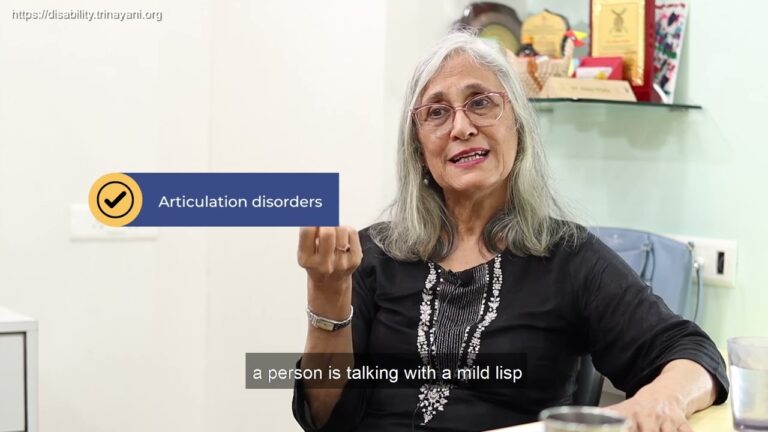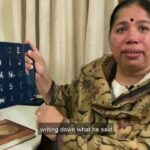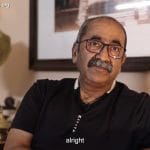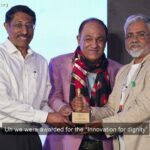Championing Ability – Cerebral Palsy Sports Federation of India
This film highlights the work of the Cerebral Palsy Sports Federation of India (CPSFI) and explores CPSFI’s role in promoting sports among people with cerebral palsy.
Kavita Suresh, secretary of CPSFI discusses their comprehensive approach to raising awareness about the benefits of sports for people with cerebral palsy in this film. She further delves into the strategic partnerships of CPSFI with NGOs and the government and explains how sports can lead to secure jobs for the athletes, emphasizing on how it can be helpful to build a career.
What is the primary objective of CPSFI (Cerebral Palsy Sports Federation of India)?
CPSFI uh, Cerebral Palsy Sports Federation of India was formed with the purpose of promoting and developing sports for persons with disabilities.
CPSFI is technically 5 years old but then the persons, the administrators working uh uh in this organization have a lot of experience, nearly 20 years of uh experience in disability sports.
So uh CPSFI was formed because uh 1.3,1.4 crore people with cerebral palsy in India is a huge number and we thought there should be a dedicated organization which caters to this community and help them take up sports.
So, we as a federation uh do cater to Paralympics and uh when it is Paralympics, there, sports or the events, the games are uh adapted to persons with CP.
So, the persons with cerebral palsy have to understand football from the point of view of how it is played at Paralympics.
So it it it it requires them to understand the rules, regulations, the modifications of the game.
So this is, this is something we do across all the sports for persons with cerebral palsy.
And uh being able to reach out to these people and build awareness uh amongst them about uh sports for them is been a humongous task and that’s pri…that’s one of our core activities.
Apart from, okay, we build awareness, then there is uh we need to identify the right sport.
Once we build, do our awareness programs which is called Sangiti, uh we have to help the children understand what is the right sport for them.
We involve persons with uh, in the uh medical domain, we involve physiotherapists and uh we help the child understand what is the right sport for him or her which is called our Pratibha Yogyata Program)
My nephew who has hemiplegia and we have to identify what is the right sport for him uh so he performs well and it doesn’t aggravate his condition and uh make him further uh, you know, uh it it shouldn’t make it difficult for him.
And then we have Prashikshan, where we help nurture the talent.
Once we identify uh the sport for the child, it could be swimming, then we help the child understand…first train in swimming, then we are…help the child understand the rules and regulations of swimming, with respect to Paralympics and the IPC rules and regulations.
So all this happens in our Prashikshan level and then of course, the final, is the Pratiyogita Program, where there are programs or competitions at different levels, starting with district level, then there is state level.
Then we have the national level sports and of course finally we prepare them for participation in international competitions.
So this is the, this is another huge aspect of what we do, apart from building uh you know, awareness about uh cerebral palsy sports.
*
How do you approach contacting various organizations across the country?
There are uh a good number of NGOs who have already done a lot of work in the disability sector, so we uh we partner with them.
And they are always willing or they were always looking for someone who could help them introduce sports in their organization, because they always had physiotherapy, but then when we say sports can be a form of therapy where the the persons don’t have to feel uh, you know, uh, they don’t have to feel uh depressed sitting in a clinic, have to monotonously go to a clinic for physiotherapy.
If they take up sport, it becomes an, you know, natural enjoyable form of therapy.
So, the moment we start talking to NGOs about this, they are willing to introduce sports in their organizations.
So this is one way that uh we have, like, tried to reach uh to the population uh across the length and breath of the country.
*
Do you collaborate with the government as well?
Yes.
So, the government has recognized CPSFI as a National Sports Federation.
There is something called NSDC, National Sports Development Code of 2011, which uh which uh mandates uh the organization which can be recognized as NSF, so we are one of the NSF recognized by the Ministry of Sports to promote cerebral palsy sports in India.
So that way uh, we, we work with the ministry, the ministry supports us in our endeavor and yeah there are good number of programs for persons with cerebral palsy.
There are uh huge uh monetary benefits, uh job opportunities when uh the children start performing uh at various levels.
I would like to give you an example of a child uh we built an, we were conducting an awareness program in Karjan district in uh Gujarat and uh it was a, it was a small NGO uh with about 50 people.
Uh when I say people it was uh parents and the children who were there and we always insist the parents should be part of these conversations because there could be somebody with a severe disability and if they decide to take up sport it is the parents or the siblings who ha…who has to contribute to their travel.
So we make sure the siblings or the parents are involved in this conversation and uh we built awareness.
And we moved out from there and there was this one girl from a remote district, remote village in Karjan, she decided to take up uh sport.
She was just 12 year old and that’s when Gujarat government had organized a Khel Mahakumbh for CP.
And this child participated.
Her expense was taken care of by the government and then she won two medals and she goes back to her village and the entire community is so happy for her, she’s happy for herself and she inspired a lot many individuals to take up sport.
Not just her, her parents also contributed because the moment they accepted the girl and allowed her to take up sport, many other parents thought this is something nice for their children too.
So, lot many children enroll for sports in uh that particular NGO, it’s called Ummeed, in Karjan district.
So, uh our experience doing these awareness programs have always been positive and uh you know, a lot of learning for us too.
*
In the last 5 years, have individuals with Cerebral palsy associated with your organization, represented India in any sporting events, regardless of their location in the country?
Uh there are a good number of children with cerebral palsy participating in international levels.
Para Athletics Championship are underway in Kobe, and uh a girl by name Preeti Pal, uh who is a person with cerebral palsy participated and she won a medal.
So uh there are and uh there is another girl, Bhagyashree Jadav, who won in discus throw.
She’s on wheelchair, but she participated and she’s won.
So there are uh a lot many athletes who have been participating at the international level and doing good for themselves and inspiring a huge uh community of uh individuals to take up sports.
*
Are you planning to aim for the next Paralympic Games?
Uh the paralympics uh, the next one is in 24 in August/September.
Uh there are children, there are sportspersons who are already selected and who are qualified for Paralympics but then uh we have been working with the ministry on a strategy for 2036.
If India is pitching for Olympics, Paralympics comes along with it and I’m sure the ministry of sports has a strategy worked out because uh there are uh…
If you take 2020 Tokyo Paralympics, there were 1668 medals in Paralympics and 135 medals were just in the cerebral palsy athletics category.
So 135 is a huge number.
Of course we came back with 19 medals which was a history by itself but then we know we have a lot more to do, uh keeping in mind the 1668.
And if we are hosting uh Paralypics, then we have to have a strategy, so we do well for ourselves and be on top of the medal tally.
*
What is the roadmap for individuals with Cerebral palsy who aspire to pursue a career in sports?
Starting at district level, uh there are a lot of children who perform well and with the medals and certificates that win, the respective state governments do offer them cash rewards.
And once they start doing well at the state level, every state has its own uh State uh Sports policy because sports is a state matter and they have their own policies.
Like Haryana tops the uh in the country with all the offers that they have for persons who win medals.
For example, uh the athletes who participated in Para Asian games recently, just for participation they get seven and a half lakh per person, just for participation.
This, in spite of the government taking care of every of their expense to travel, go and come back and participate.
So this seven and a half lakh is probably to cover their training and you know, whatever nutrition and etc that is required for them.
So the athletes who come back winning medal, their cash prizes run in crores, you know?
If it is a Paralympic medal, gold medal is like 3 crores, 6 crores, depending on what what is the color of the medal.
So that’s Haryana, and Gujarat, Odisha, all of these states have their own uh uh reward schemes.
Uh recently the ministry, because we are a recognized NSF, ministry introduced Khelo India for uh disability games for the first time.
So, in the inaugural edition, CPSFI was asked to uh be responsible for the conduct of CP football for boys and we did that.
And all the boys who won medal, the one, two and three, gold, silver and bronze, they are entitled to jobs.
And if they are already in a job they’re entitled for promotion.
So uh sports definitely, this is something not many people understand that sports can be a career too for them.
So, during our awareness programs, we do make it a point to touch upon this as well, because there are some children who take up sports because this is one form of livelihood for them.
Resources
adaptive sports, Cerebral Palsy, CPSFI, disability awareness, disability community, disability rights, disability sports, hemiplegia, inclusive sports, Khel Mahakumbh, Locomotor Disability, medal opportunities, national sports federation, para-athletics, para-football, Paralympics, physiotherapy, sports career, sports federation, sports rehabilitation, sports therapy
Dive Deeper: More on Disability
Learn about the most common inquiries surrounding disability, education, legislation, accessibility, employment and other sectors related to disability.


















